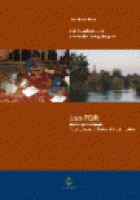Publications

This report documents the Lao People's Democratic Republic's success story in rapid national electrification integrated within a broader strategy of national and rural development. In 15 years (1995-2009), electricity access more than quadrupled, from about 15% in 1995 to 69% in 2009 -- and the program is on track to achieve the government's target of 70% national coverage by 2010 year-end. This expanded electricity access resulted in over 700,000 household connections by 2009 year-end, from about 120,000 households connected in 1995. The government of Lao PDR has pursued a pragmatic and purposeful approach. Further, a series of government policy initiatives helped steer the rapid liberalization and modernization of the national economy, as a consequence of which the economy has grown at an average annual rate of 6.5% since 2001. The key to the successful implementation of the national electrification program in Lao PDR has been its institutional model of grid extension and rollout driven by the national electricity utility, Electricite du Laos (EDL). The government recognized from the start that state subsidies would be required to ensure retail tariffs and the connection fee for grid access would be affordable by poorer segments of the population, especially as the grid's reach extended deeper into the rural areas of the country, where the vast majority of the population resides and incomes typically decline. The Power to the Poor (P2P) Program implemented by EDL is a targeted, subsidized, affordable, and sustainable financing mechanism for connection and indoor wiring. Lao PDR is on the threshold of graduating from Least Developed Country status. The power sector has been a key partner in the nation's development so far. However, looking ahead, new demands and expectations of the sector pose new and different challenges.
World Bank. 2012. Lao PDR - Power to the People : Twenty Years of National Electrification. Washington, DC. © World Bank. License: CC BY 3.0 IGO. https://openknowledge.worldbank.org/handle/10986/12900